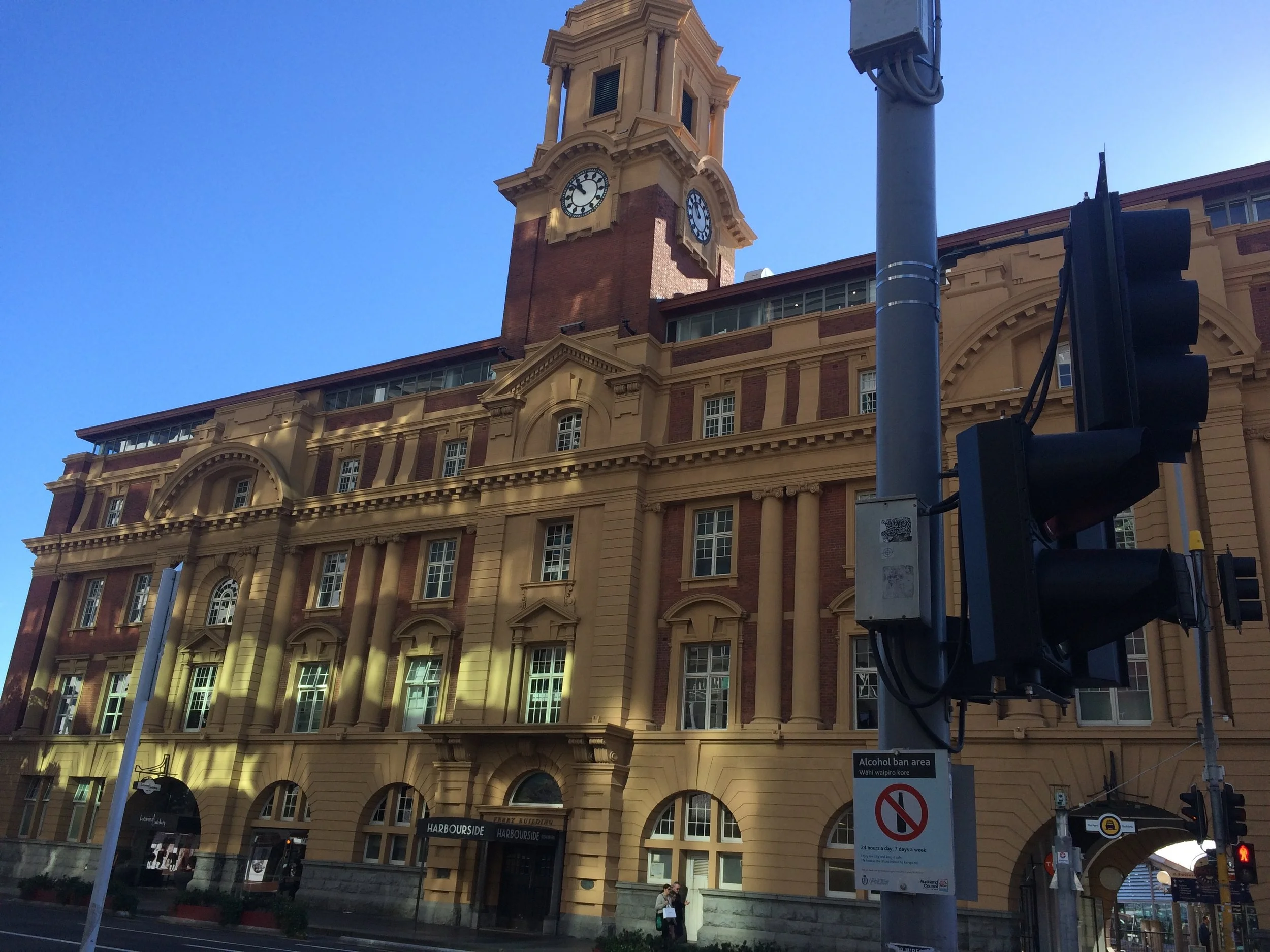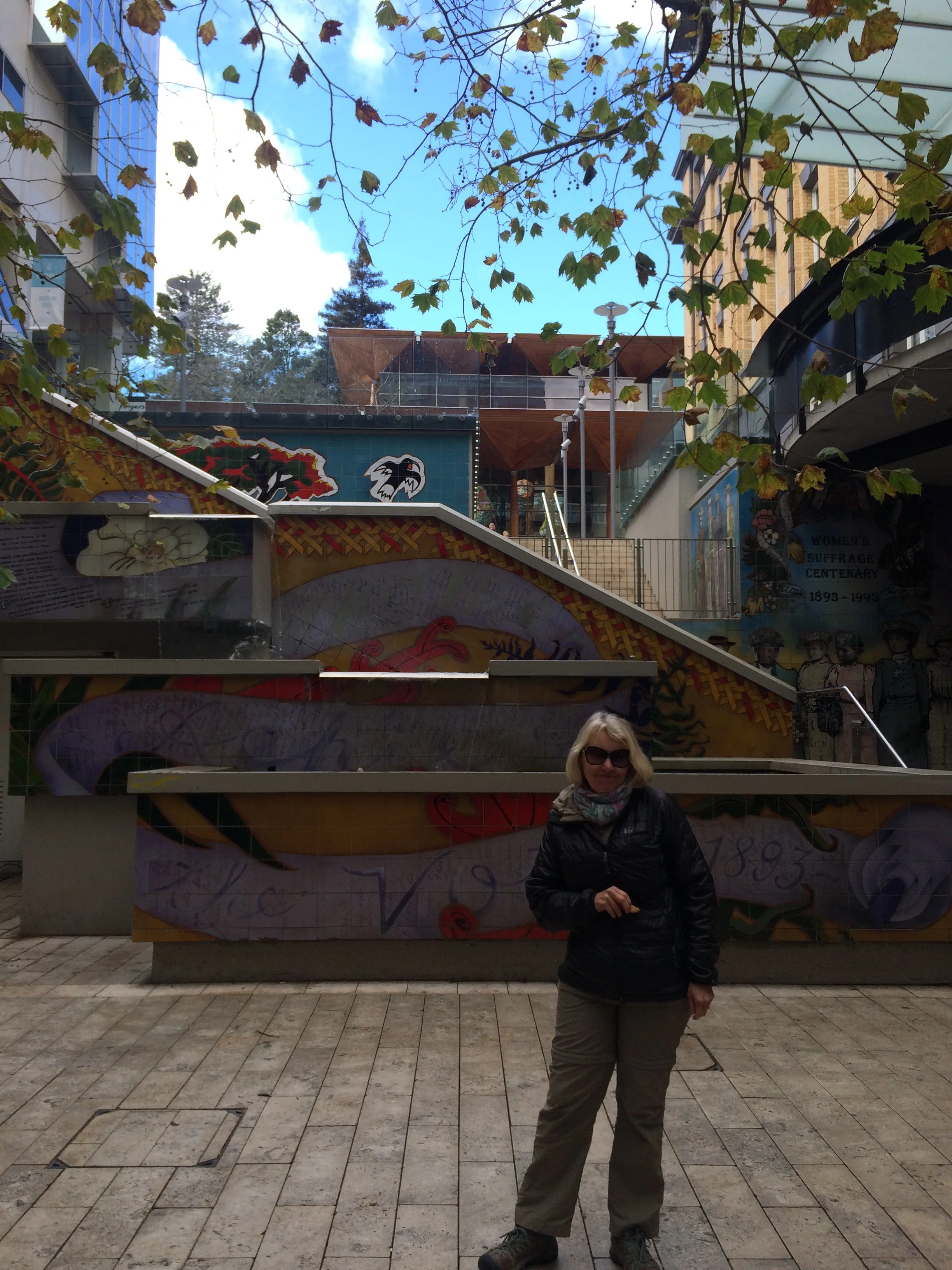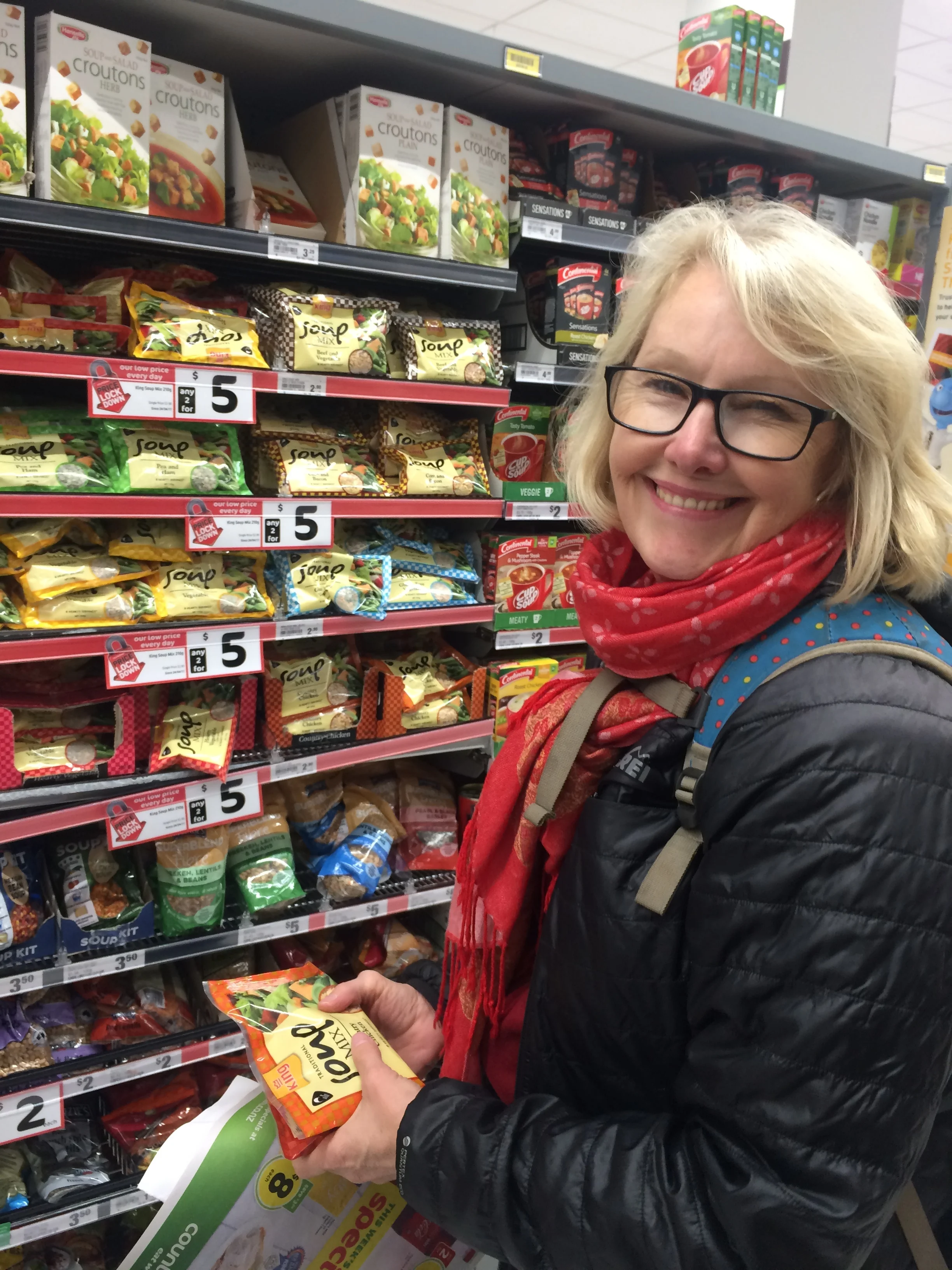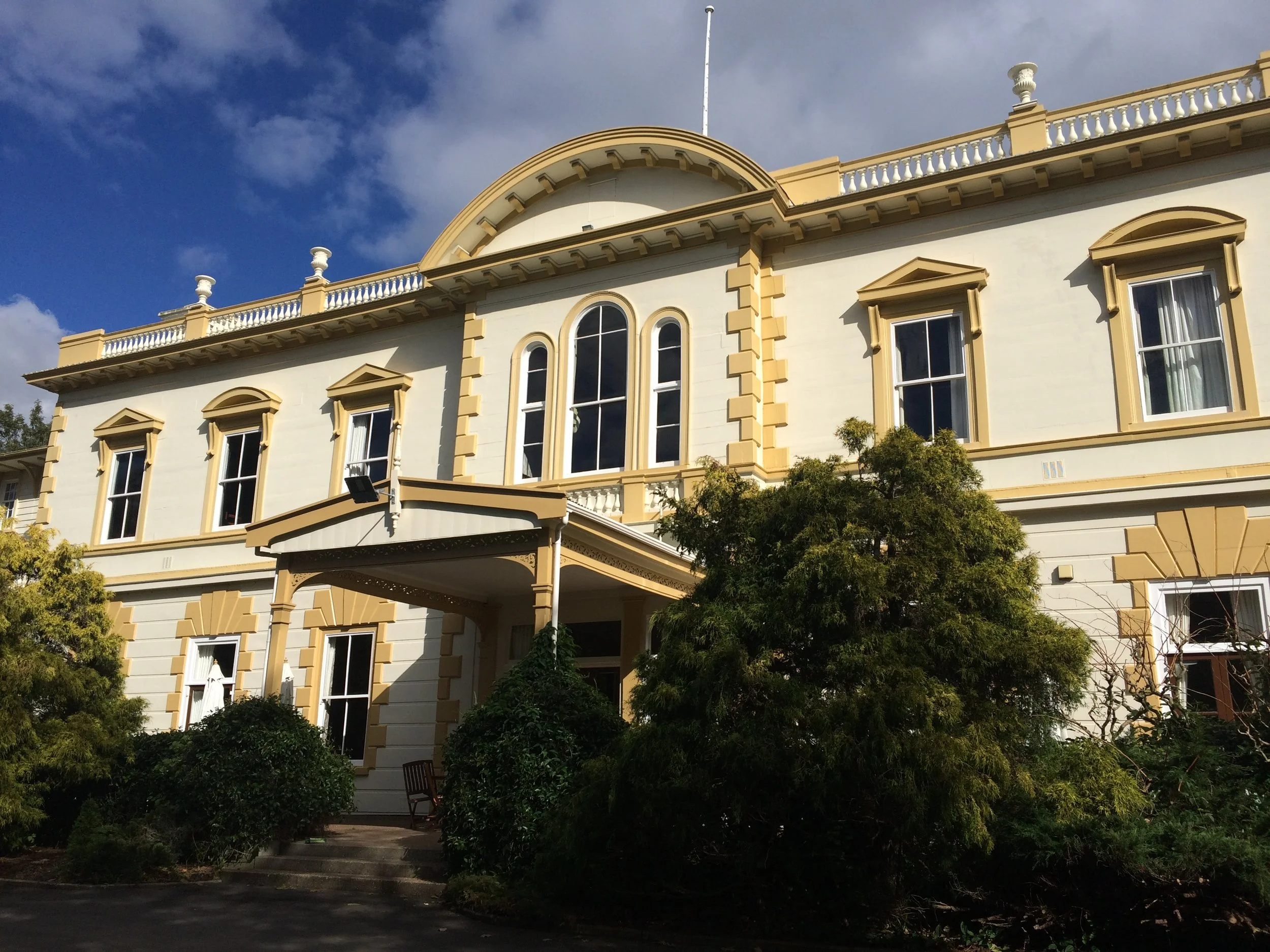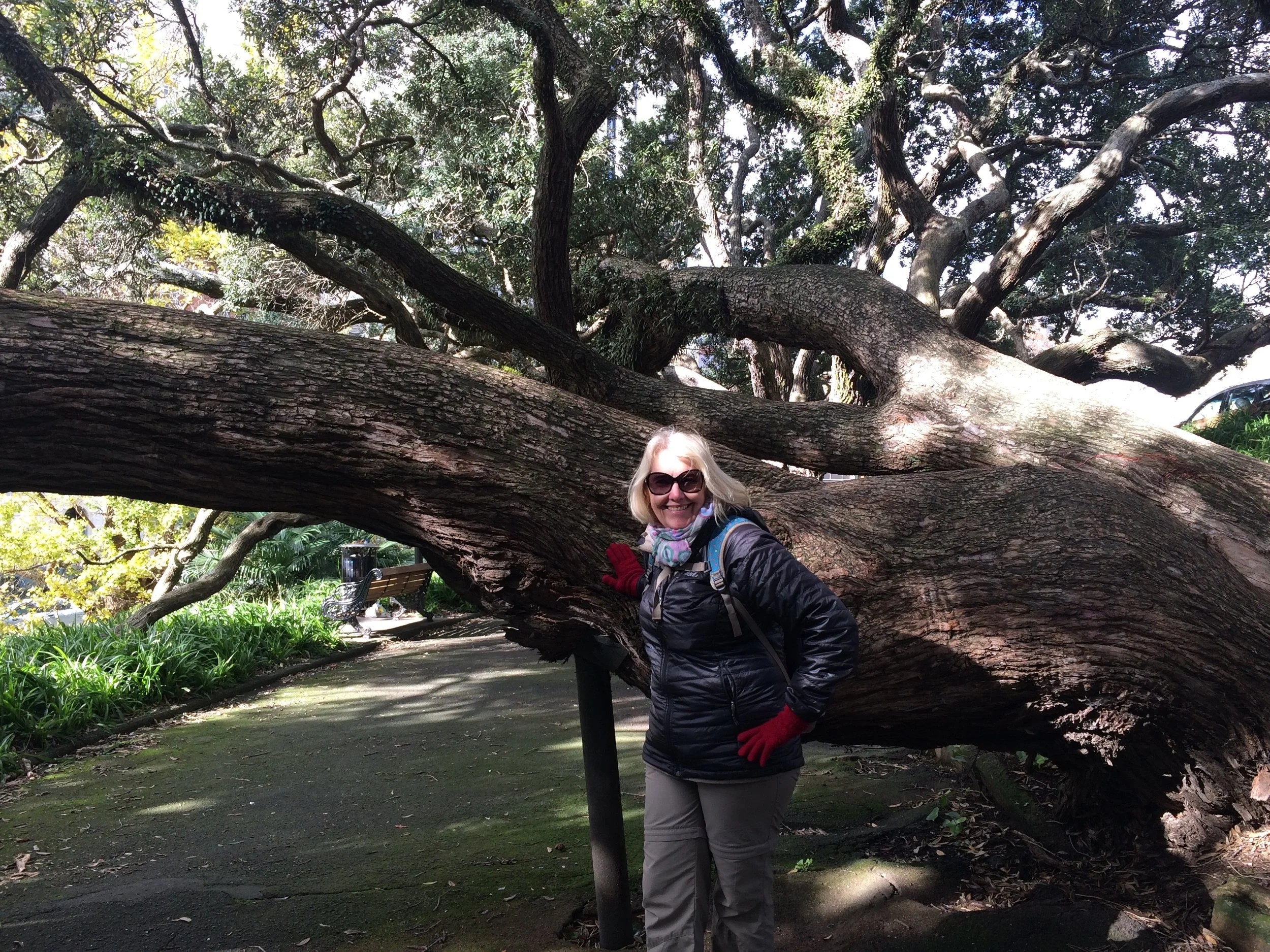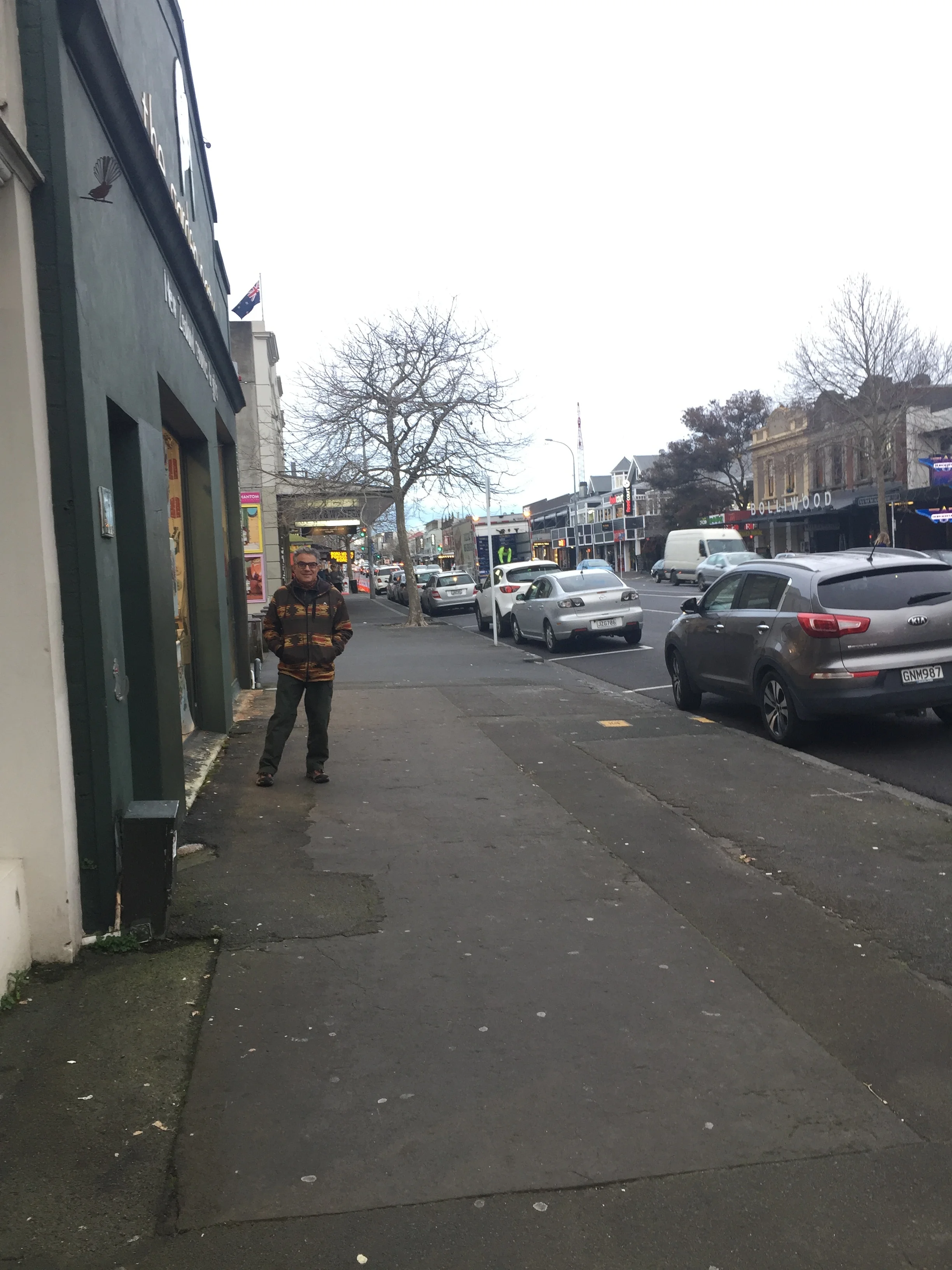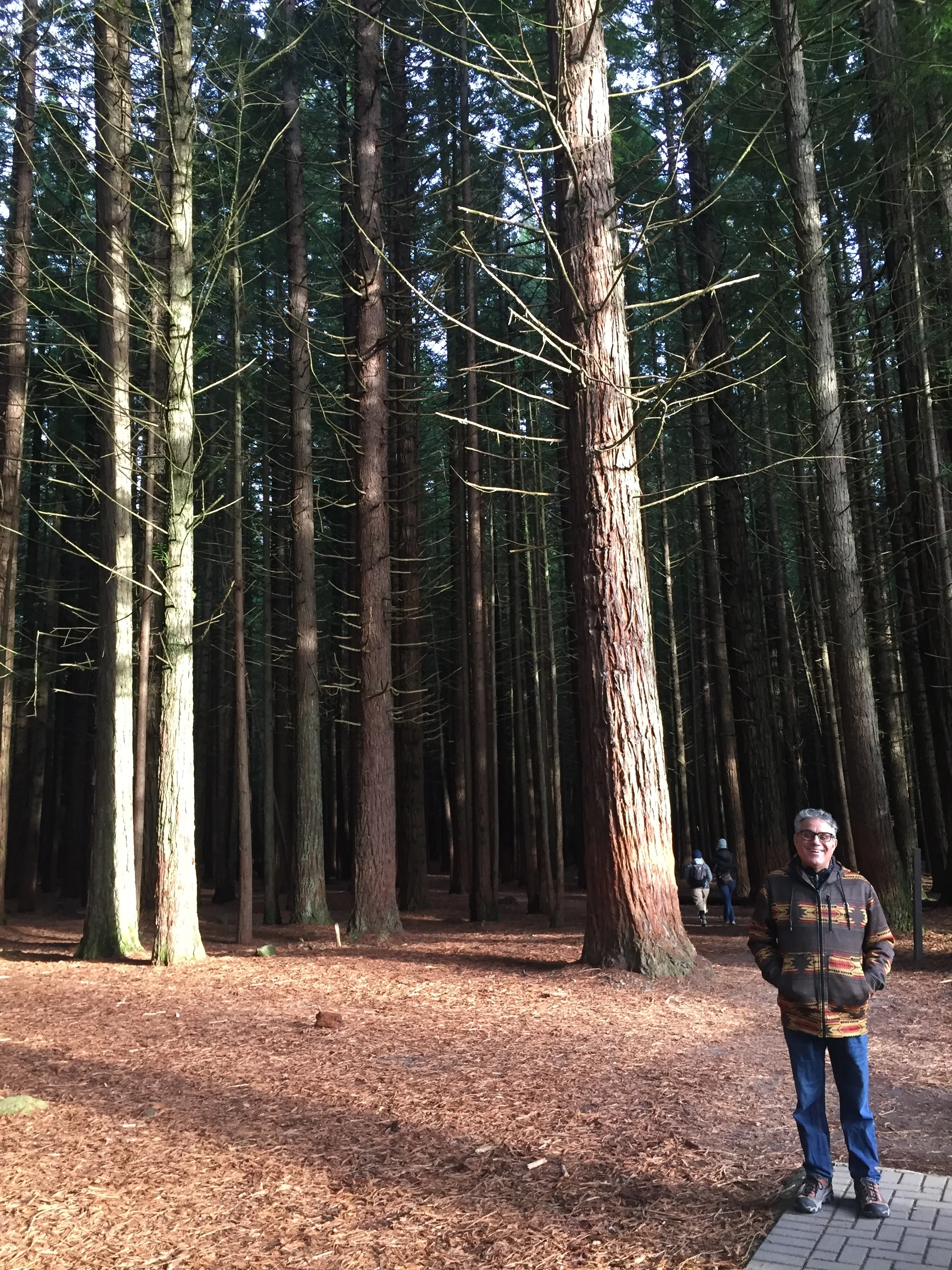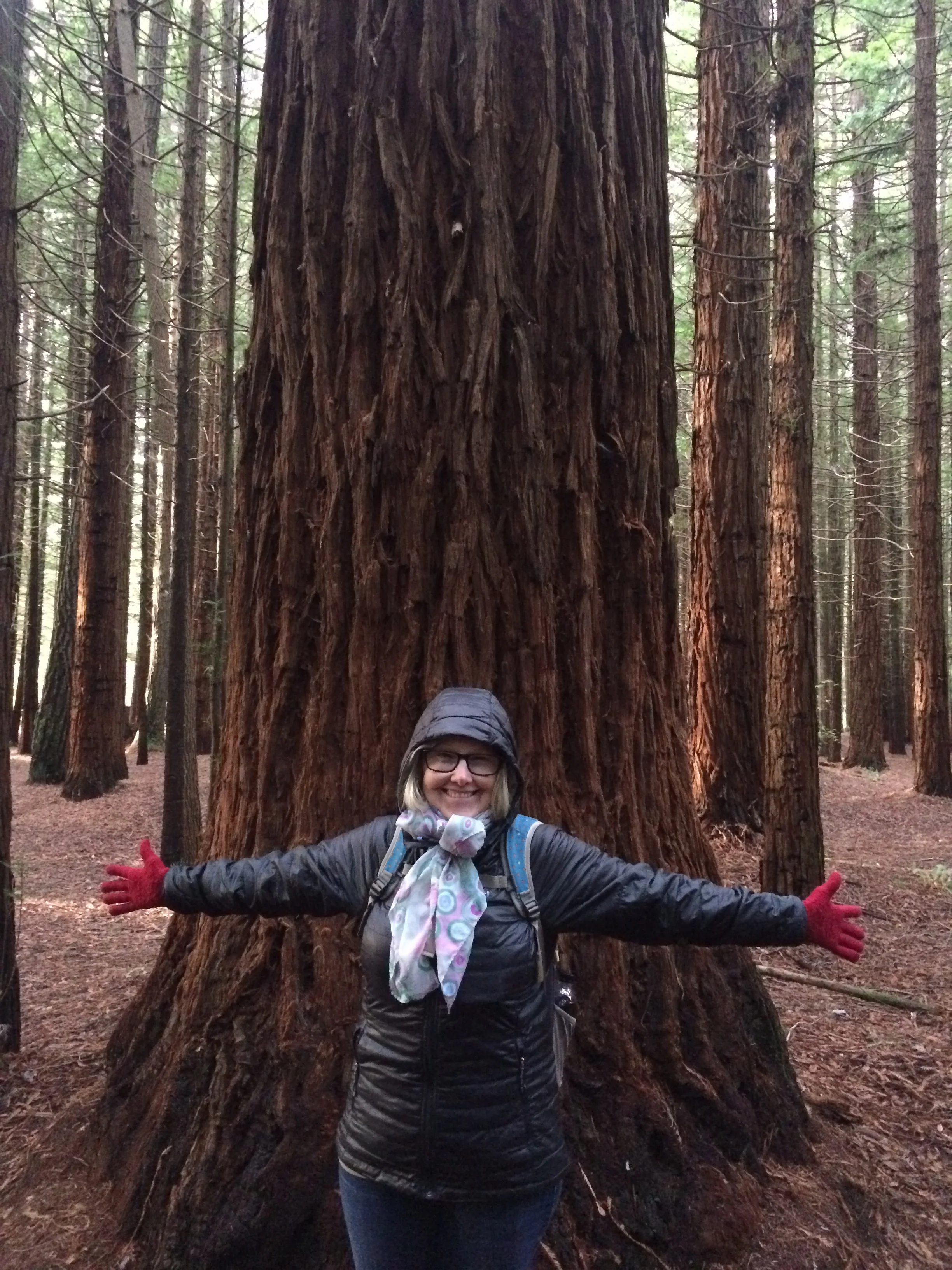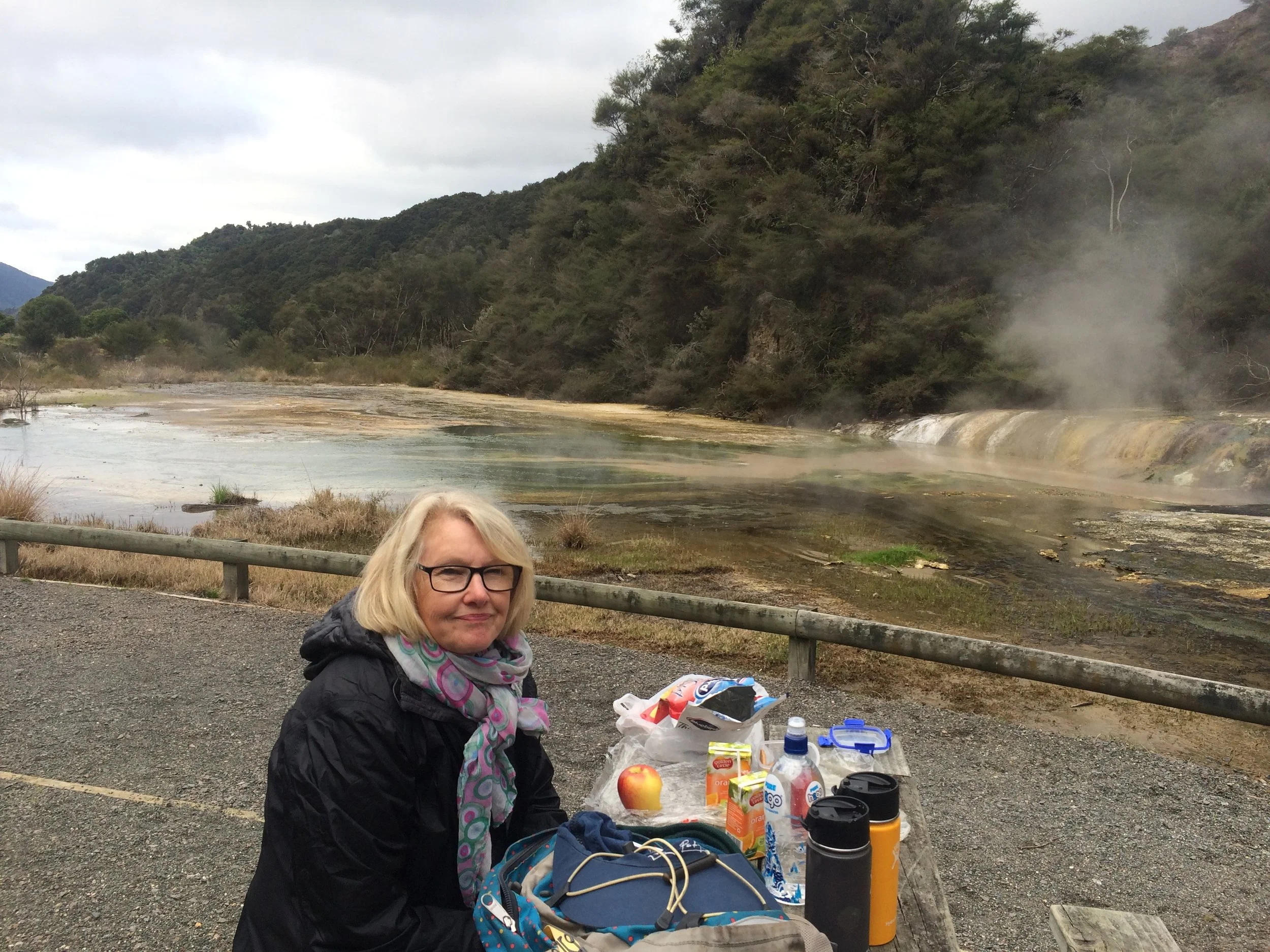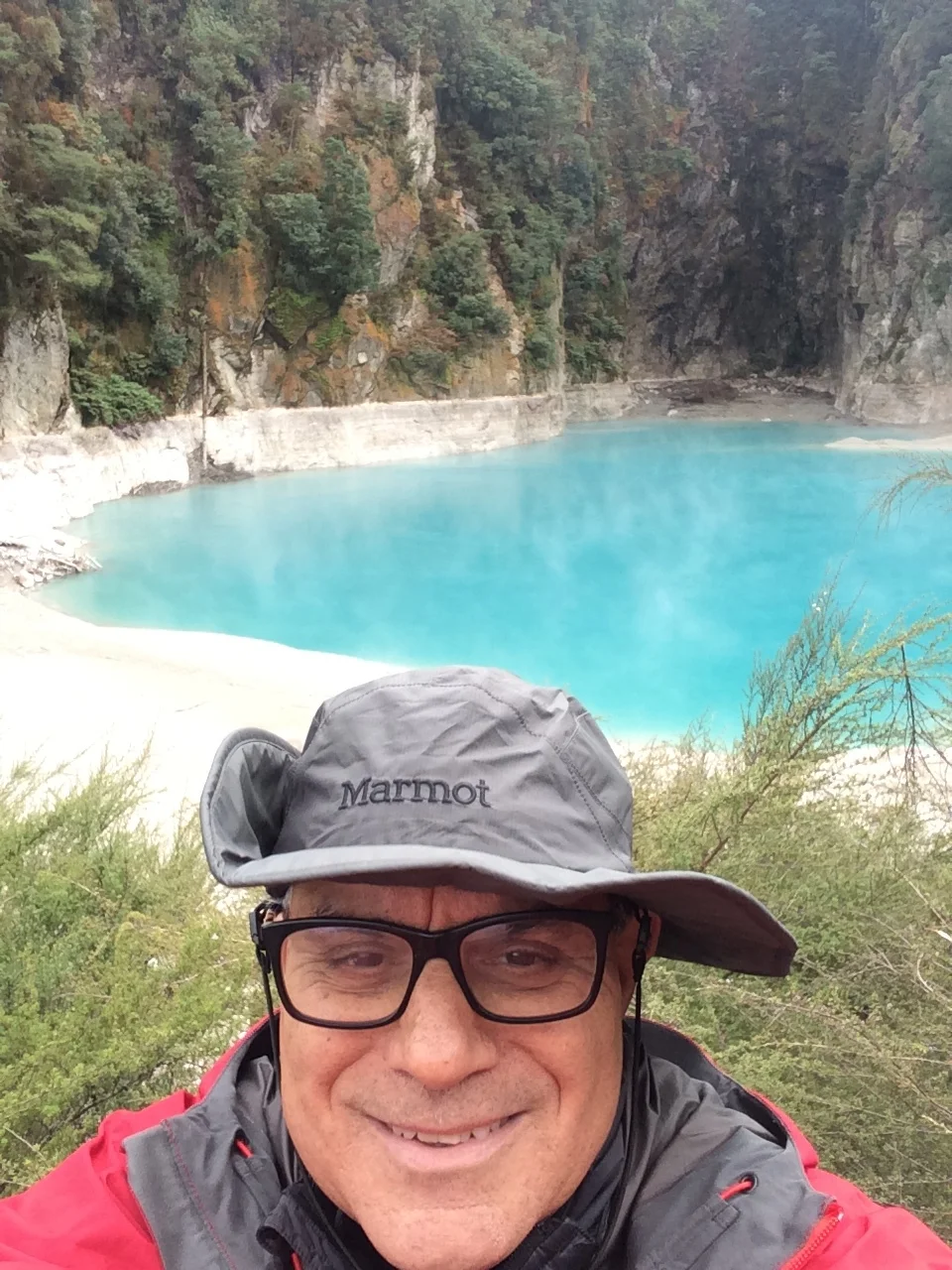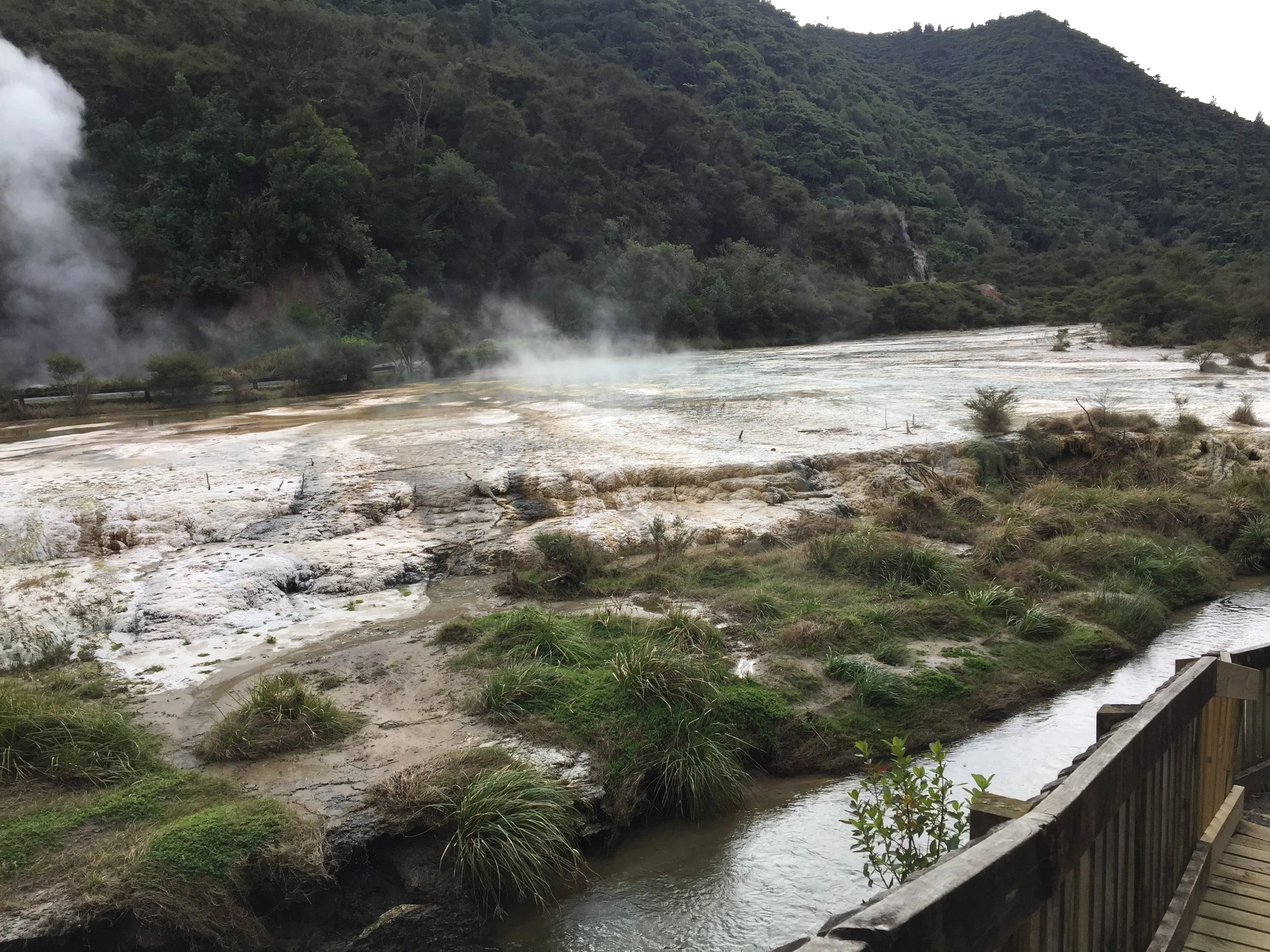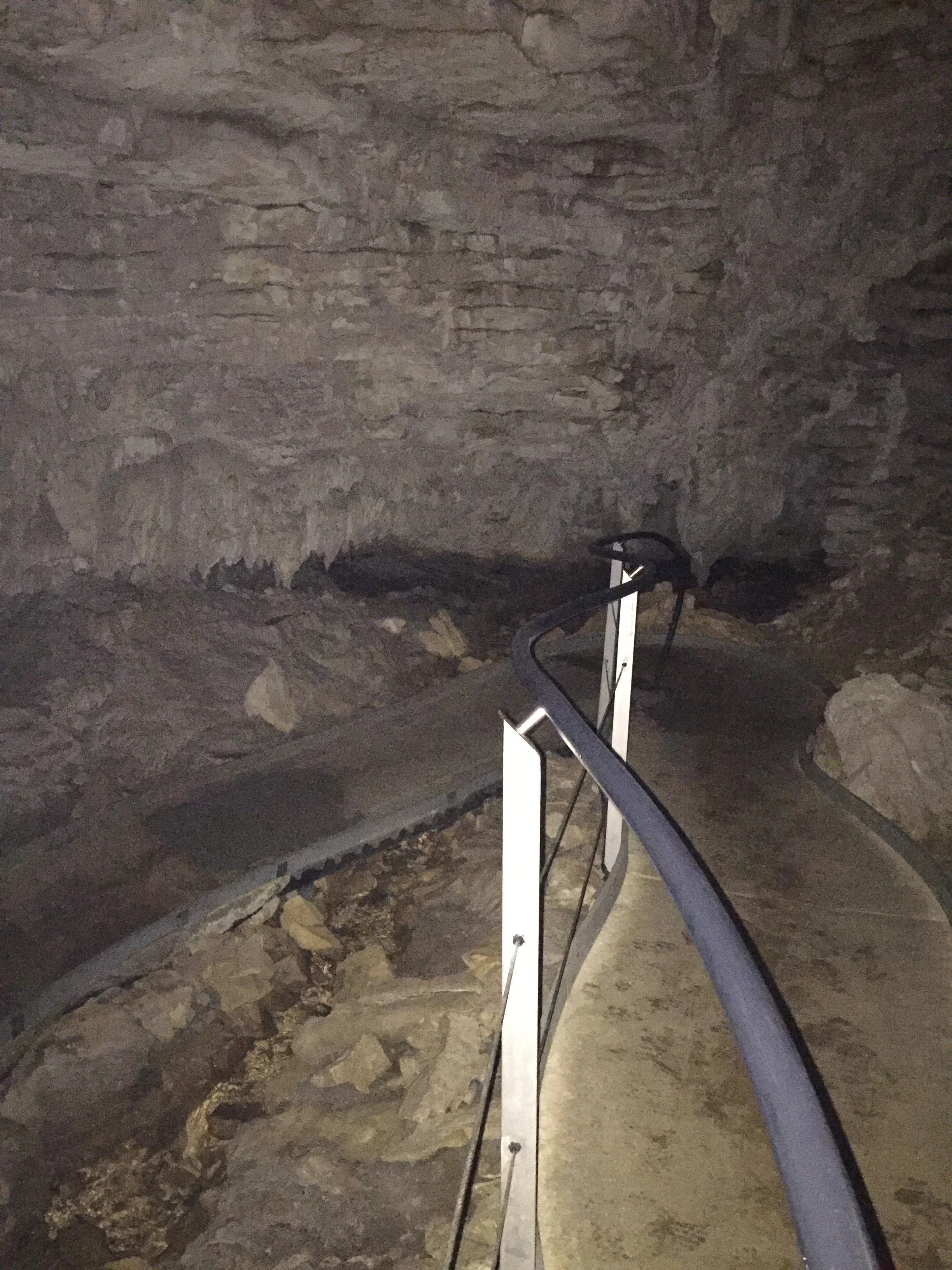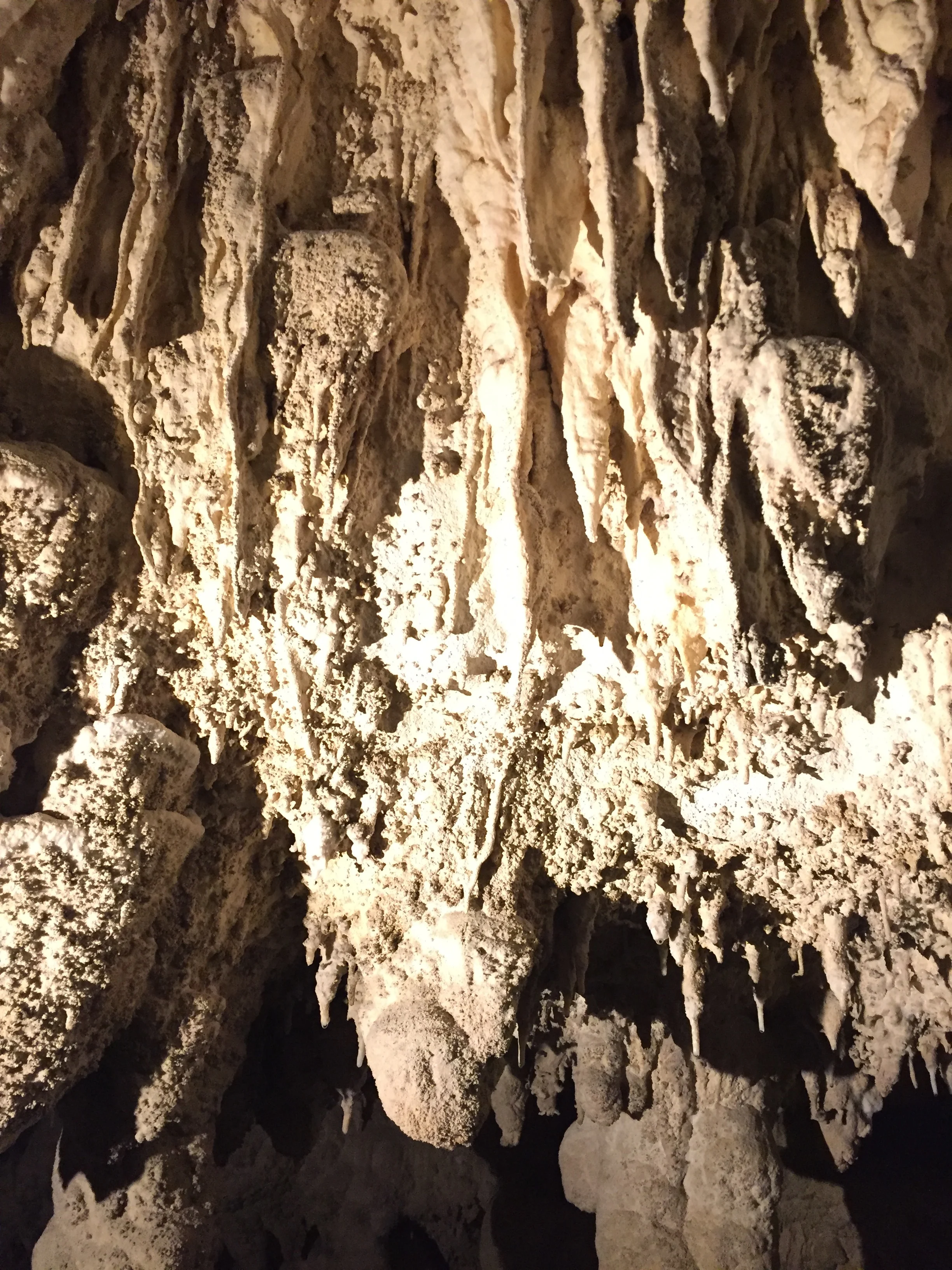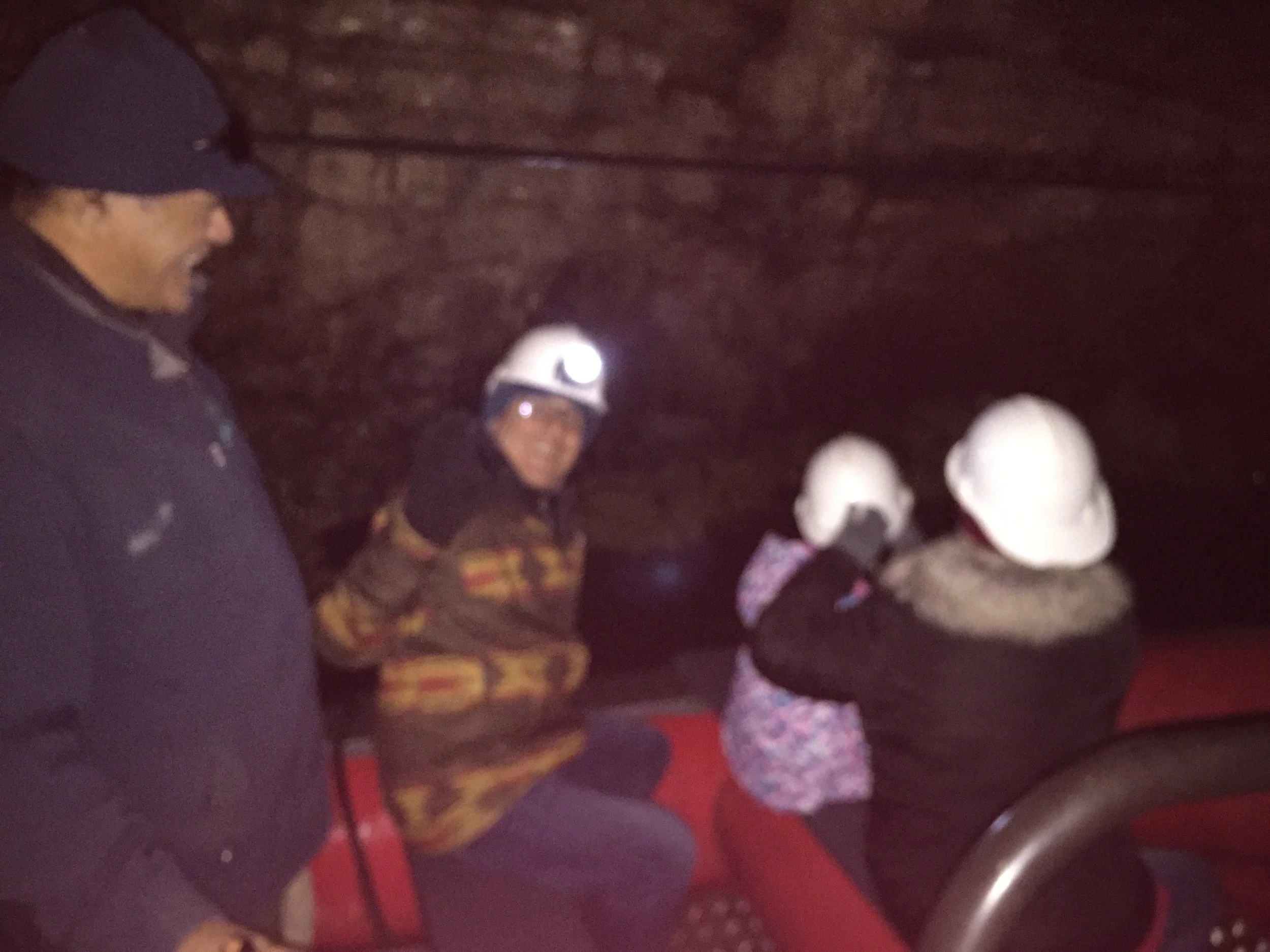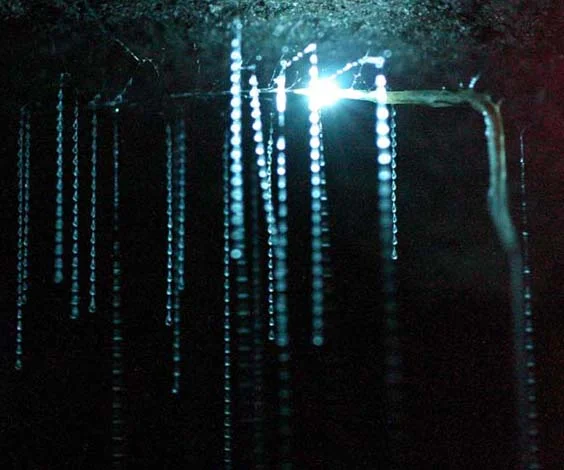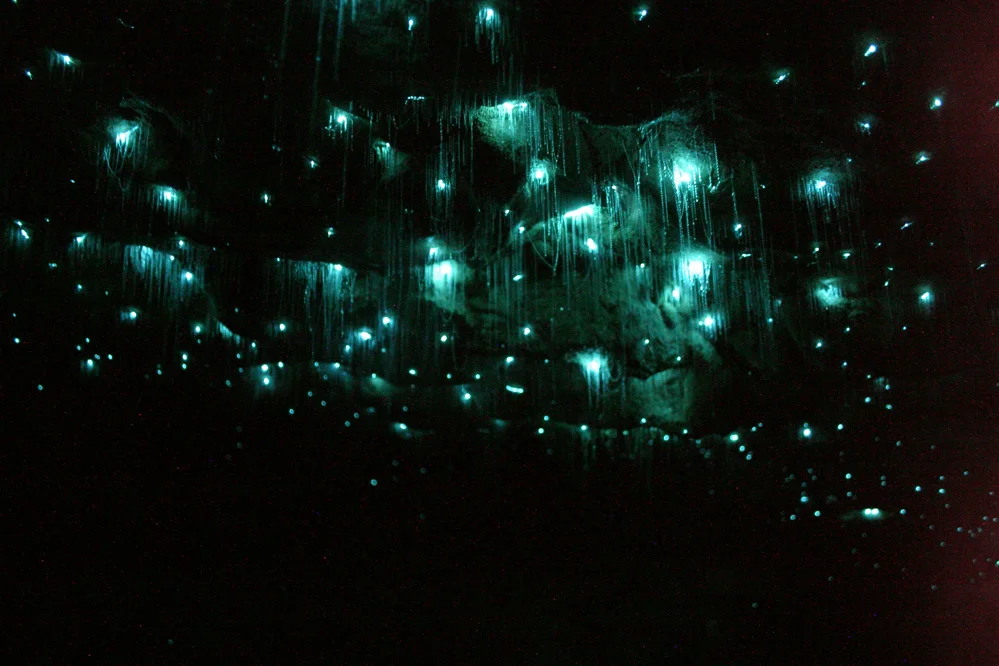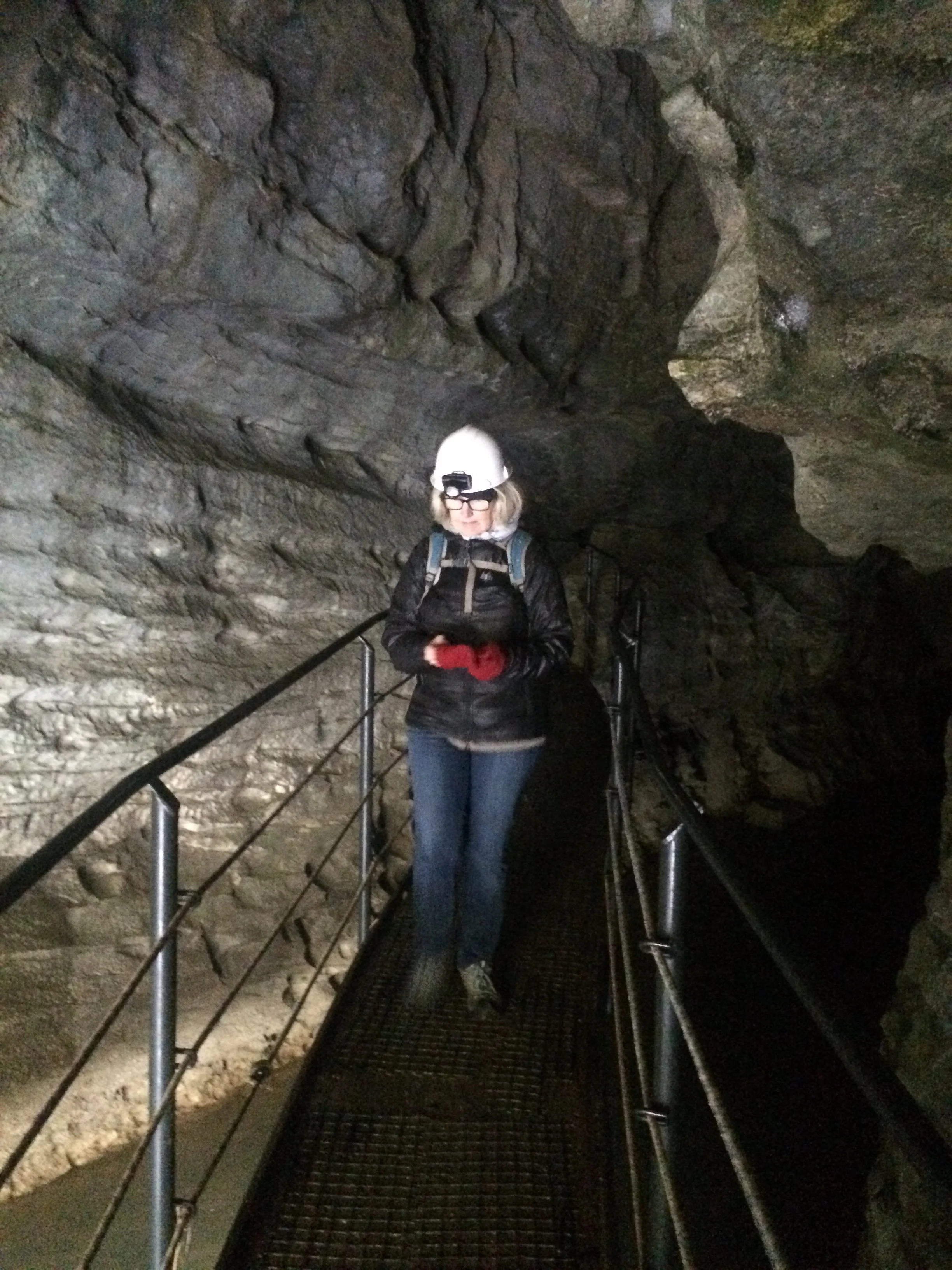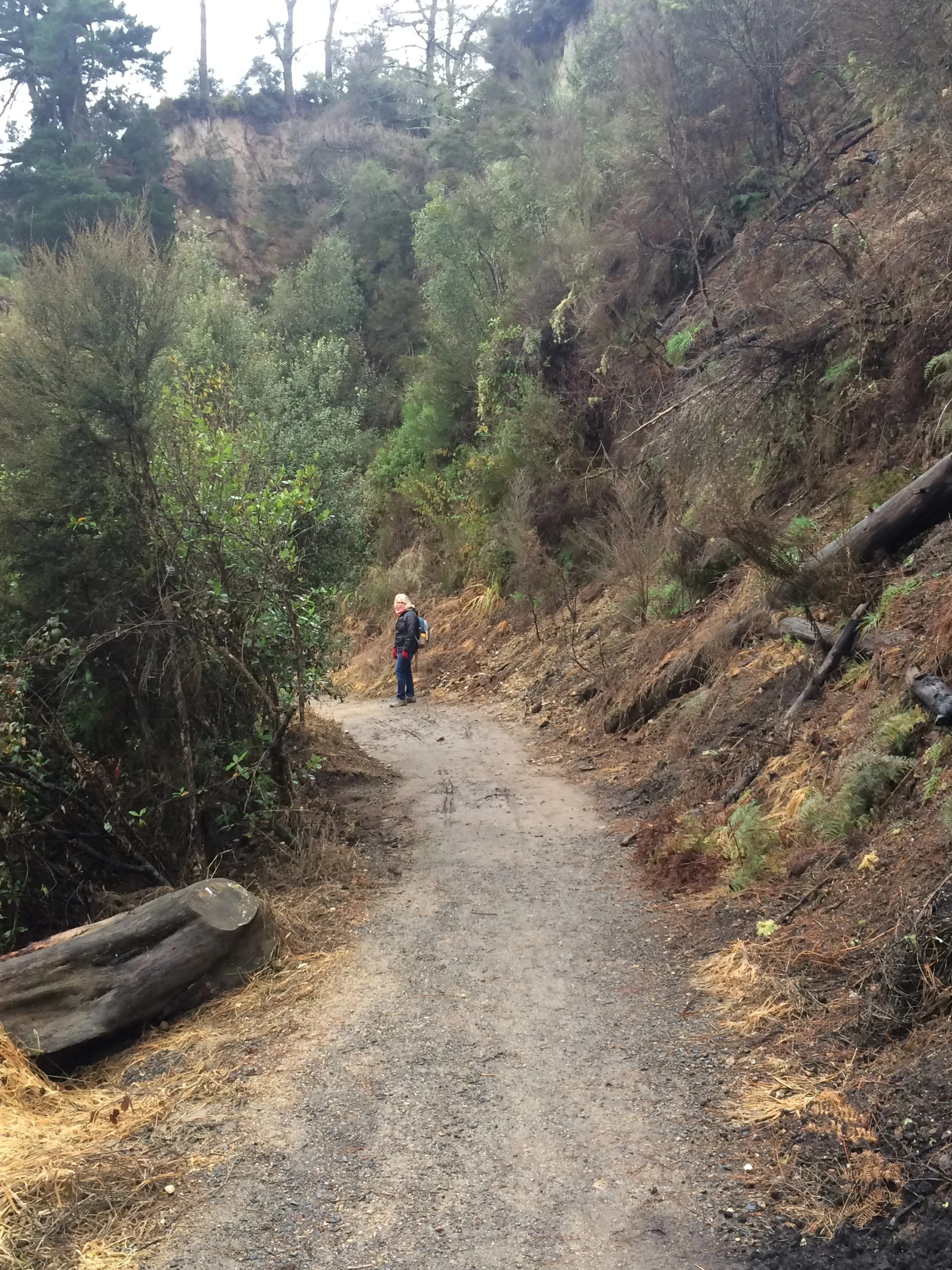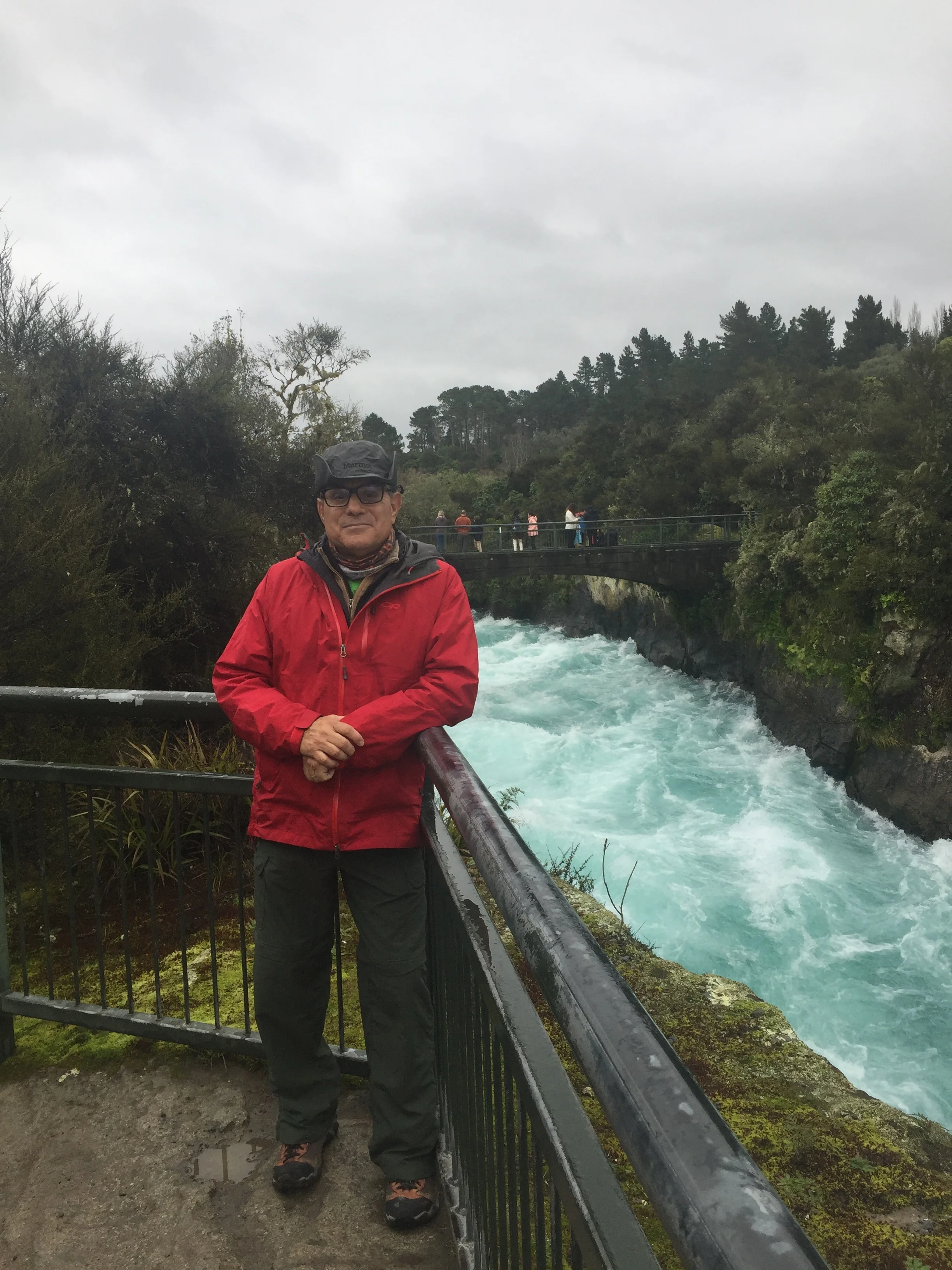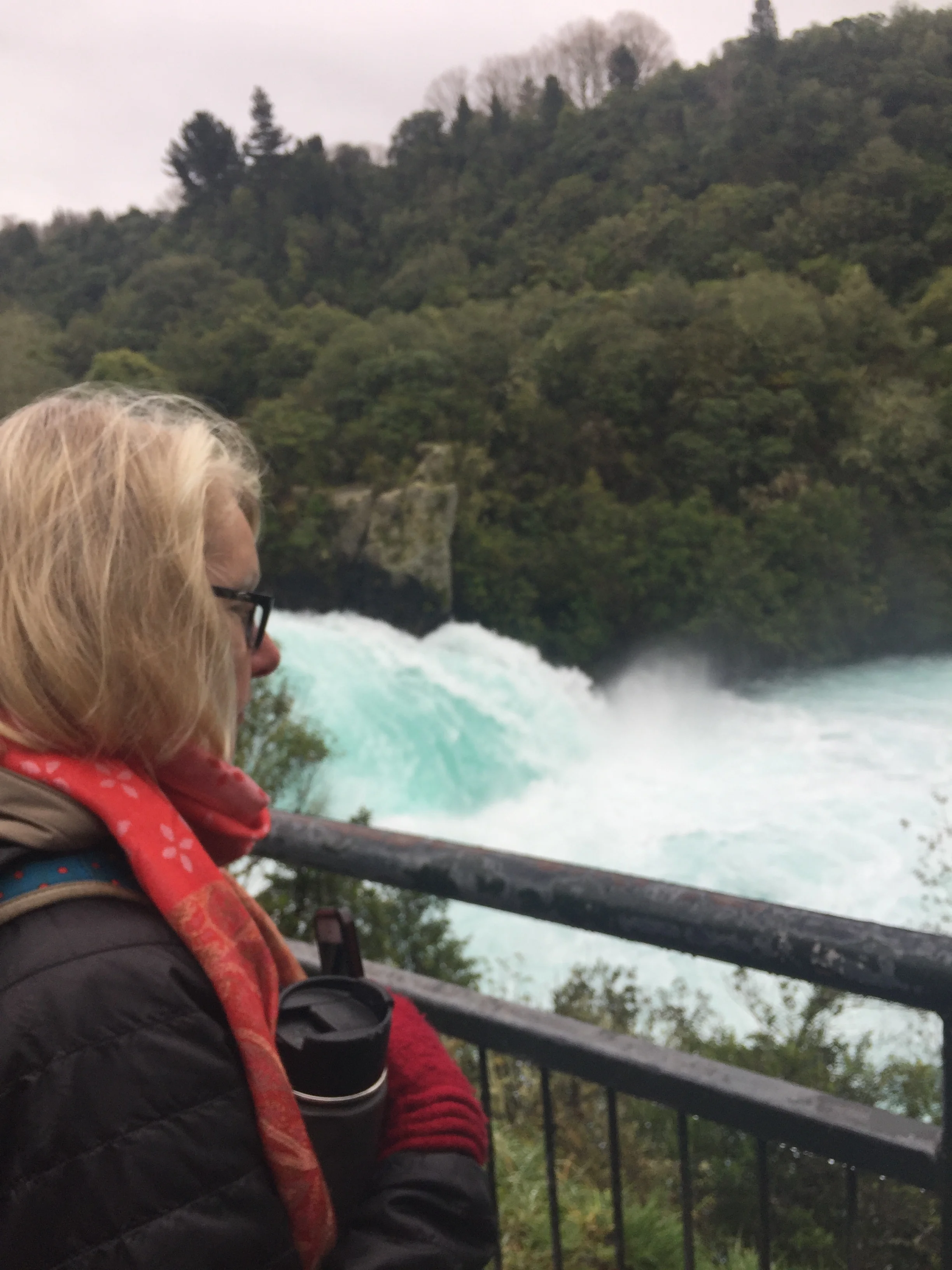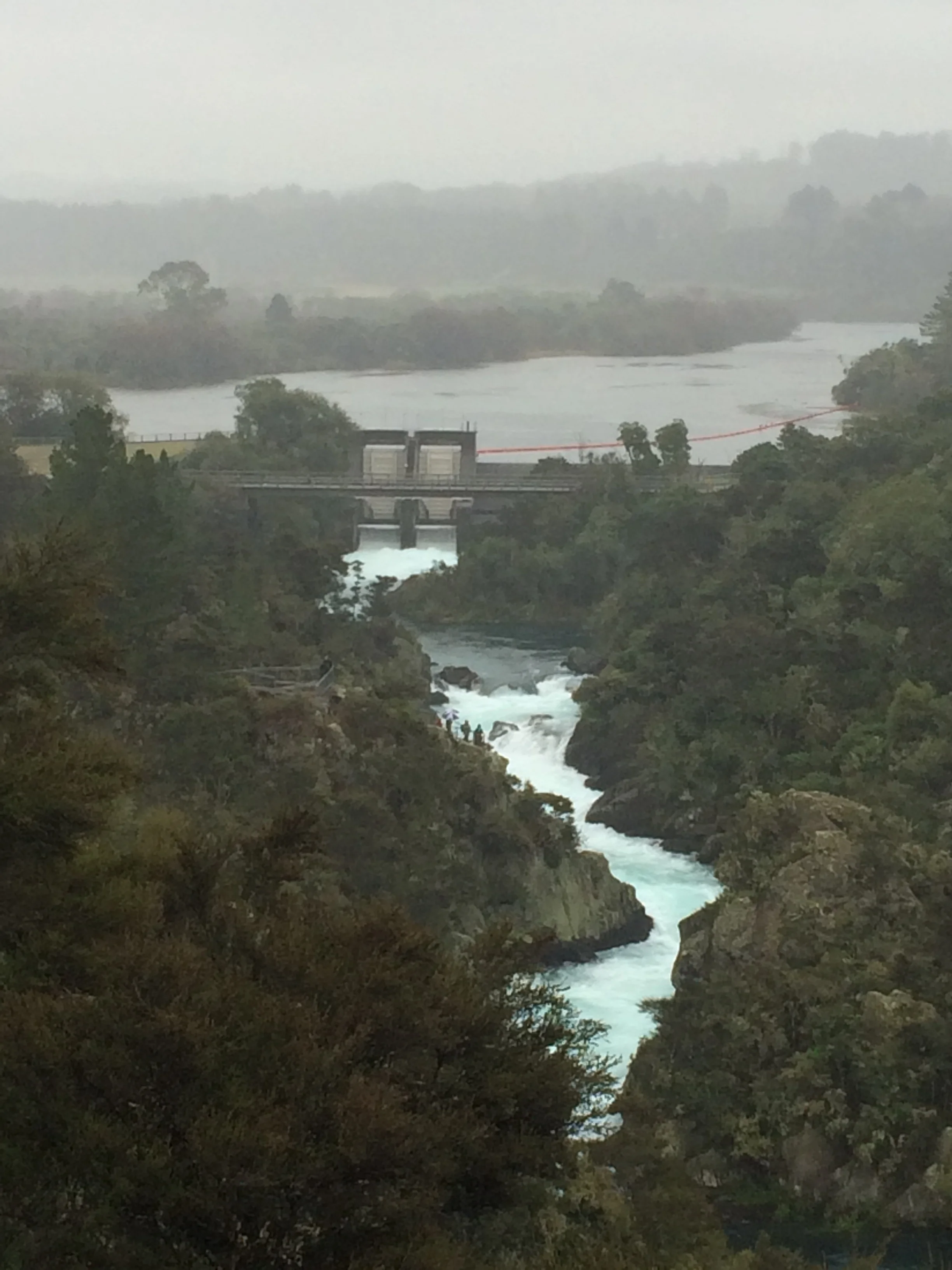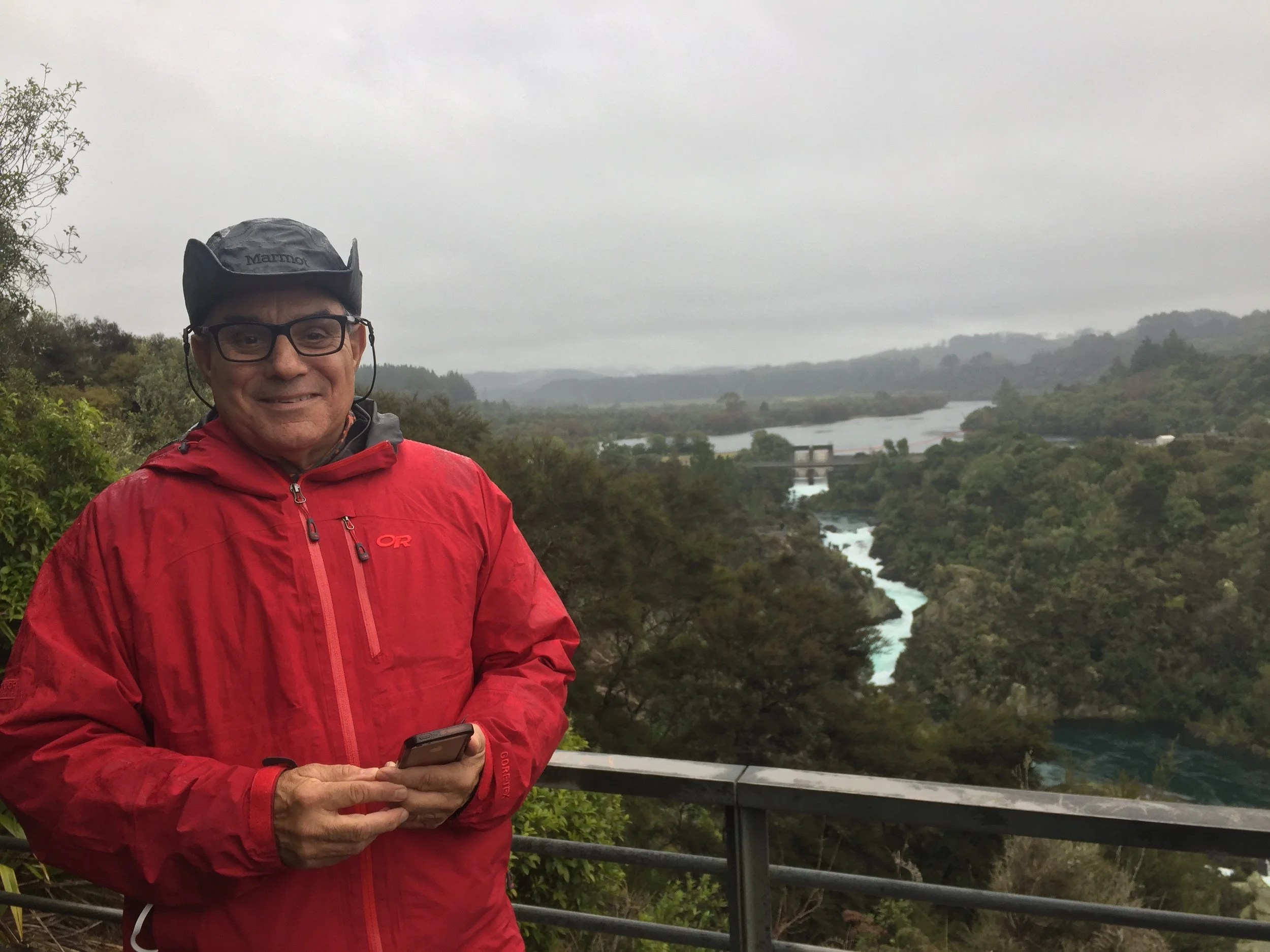Auckland
New Zealand is our final country to visit on this almost one year long journey. To our surprise or naivety, upon landing in Auckland, north island, we first realized there is a very large Tribal population of indigenous peoples that first immigrated to NZ 1500 years ago from the islands of the Polynesian culture using large wood catamaran canoes, following stars and tide wave action. They are called Maori. These same Polynesians immigrated 1000 years ago to Rapa Nui (Easter Island) which was at the beginning of our adventure. You might remember, we flew 4000 miles from Santiago, Chile, to Easter Island to see the Maori culture and statues. Our trip and cultural experience has come full circle. We spent time at the Auckland Museum looking at the Maori history of habitation, culture, and society.
Frank at the Auckland Museum
Now in Auckland, we can enjoy another country that became part of the British Commonwealth at the urging of Queen Victoria who feared that France would claim the islands after a surge of missionaries and traders. It was the French that brought Catholicism to NZ; the Brits were Evangelicals.
Frank at Price Albert park, Queen Victoria's statue in the background
Auckland is surrounded by bays; the greenery of the countryside can not be ignored. We first saw the criss cross patches of green from the plane. The city has a population of about 1.5 million and is spread out around the bay. Most living quarters are single or double storied. People strive to own their family dwelling. There are high rise buildings in the central business district interspersed among the traditional structures and historic streets. We chose to skip hotels and high tech living and return to more rustic accommodations.
View of the harbor from our Hostel
The Verandahs Backpacker Hostel was great; it was a throwback to the really great hostels we had in South America, except for the cost, $70 for a shared kitchen and bath. Centrally located, we could walk around the University of Auckland and the Auckland University of Technology (AUT). We took the public bus to the waterfront to get our Free Walking Tour; not the cheapest transit, $7.50 one way. In fact, NZ is expensive for travelers—equal to Australia—and both are the most expensive places we have visited; more than France or Germany.
The walking tour was interesting; our guide Olivia was energetic and passionate about her city. Auckland works hard to preserve its older buildings, designating many for level 1 and level 2 protection; L1 = no changes, and L2 preserves the façade but allows interior changes. Auckland also tries to protect the indigenous culture of the Maori, who were represented by about 400 separate tribes in NZ when they came to a treaty with the British. We are told 700,000 ancestral indigenous still live in NZ. Auckland is also has an ECO friendly “green”philosophy. The city is installing the first subway, admitting that everyone still has a car to travel the rural roads. The gardens and parks around the city are filled with the most incredible trees. But you can not imagine the splendor of the landscape until you drive into the countryside.
Rotorua
Frank driving our compact car on the "proper" side of the road
On our second full day in NZ we rented a small compact to drive around this country; first the Northern Island from Auckland to Wellington, then ferry across the sound to Picton and drive around the South Island to Christchurch. This is the first we have driven since back at Chiloe Island, Chile. Here, they drive on the left side so the steering wheel and shifter are on the reversed side. At first you have to pay close attention to their well marked signs and think about the turns, but after awhile you can be calm; noting that this country has a relatively small population and many miles of empty roads. Our first road trip was from Auckland to Rotorua. It was a five hour drive. We stayed in town at the Rock Solid Backpacker Hostel, another good one. As soon as we arrived we went to the Redwoods Forest, what a great place and hike, see our photos below. We decided to stay an extra day to drive to some out of town sites.
Our second excursion the next day was to trek the “Waimamgu” geothermal formations. This is billed as the “youngest geothermal area in the world”. Don't know if that is true, but the volcanic activity last transpired in 1904. And the sulphuric water and hot ponds are very active. It was a great trek through the cathedral and valley with great scenery. Surprisingly, black swans were feeding in the stream near to the sulfur water—kind of like a drip drip drip of hot water into the Walmangu stream that runs to Lake Rotomakarira. Note the Maori names used everywhere in NZ. See our trek photos and lunch at the hot springs below
Te Kuit
The next day we arose at 6:00 am and left early for the drive to town of Te Kuit, and the world famous Glow Worm Caves of Waitomo. This drive was super scenic. The landscape is like a bright green carpet that is rolled out over the crest and troughs of the hills that extend to the horizon, with usually a grey shadow of volcanic mountains in the far distance.
A quick stop on the road to see one of many great views
At the Waitomo Caves area the Teutonic fault lines display sharp crevices, barred rock, and sinkholes in the sides of the hills. These are the signs of cave formation. Otherwise the land is rolling green pastures for cattle and sheep to graze.
Our knowledgeable guide drove us to 2 cave sites. The first had stalactites and stalagmites . They were not straight up and down vertically, but often had curly cue shapes caused by wind flow. The Cathedral room opened into an open crevice to the surface that was about 20 feet long/wide, displaying the cave ceiling above us mere mortals. Here, water dripped and air flowed—but usually animals were blocked off by the Farmer’s fences or more likely his planted hedgerow. Seeing a hedgerow was a key indicator that a crevice or sink hole above the cave had been found. There were, however, bones of creatures—usually large birds in the cave. NZ had no mammals on the islands (except 3 kinds of Bats) until dogs and rats landed with the explorers.
The second cave, which was black as a tomb, contained the Glow Worms. We rode in a small raft that was pulled over the water in the cave tunnel. Our layman’s explanation: These are the strangest tiny creatures that attach themselves to the ceiling in the thousands and lower single strands of goo, about 3-4 inches, with the goal of trapping food that may fly or float through the caves driven by the light wind. They are not sensitive to light, but rather to vibrations, which cause each of them to glow in order to attract prey. The higher the vibration the brighter they glow. In a dark cave the glow reminds you of the vast stars in Milky Way Galaxy. It is really a phenomenal experience.
Ps. We also experience seeing large river EELS (2-3 feet long) that wind there way through the outdoor streams from bank to bank where you might expect to see trout. Apparently they are edible and are eaten by the Moira and others.
Taupo
We left the cave area and drove to our next destination of Taupo in the central north island. This was another road adventure with winding roads and steep edges. We arrived before dusk, thankfully, and crashed at Rainbow Hostel. As before in NZ, the first stop was a grocery store. We have used the kitchens in the hostels for most meals. This was another large place, but spread out on a single level. The other hostels we stayed at were multi storied.
We planned three excursions in Taupo, but due to heavy rain settled on two sites. First, we trekked, or as NZ says-“tramped”, the River walk, about 3 km to the Huka Waterfall. The river has monstrously high banks covered with multi-colored green foliage. The rush of the clear turquoise water adds to the beauty. This wide river borders small geo-thermal ponds emitting steam that are open to bathers. The river current is fast and sports a competitive Kayak slalom course. The river narrows significantly and that is where the compression of the waterway makes the force of the falls so dramatic although not really high above the river.
Then we went to the “Aratiatia Rapids”and walked to the high viewing stations. These rapids were once natural, but now the course of the river is dammed for hydro-electric energy. However, lucky for us, the dam is opened three times per day which allows a great onslaught of water to pour into the ravine pools and create the moving rapids and smaller water falls. Watching the dam function was an unusual experience; an interesting interplay of technology and natural forces.
We later stopped by “Moon Crater” geo-thermal walk and “Waikato” geo-thermal walk, but it was just too wet and raining to proceed. We like the steam of the thermal pools, but we have seen enough of them to avoid bad weather. Tomorrow, we are getting up early to drive to the Tongariro National Park. We will spend the day there and then drive 200 Km to the capital city of Wellington.
Great example of our treks and the vast landscapes
